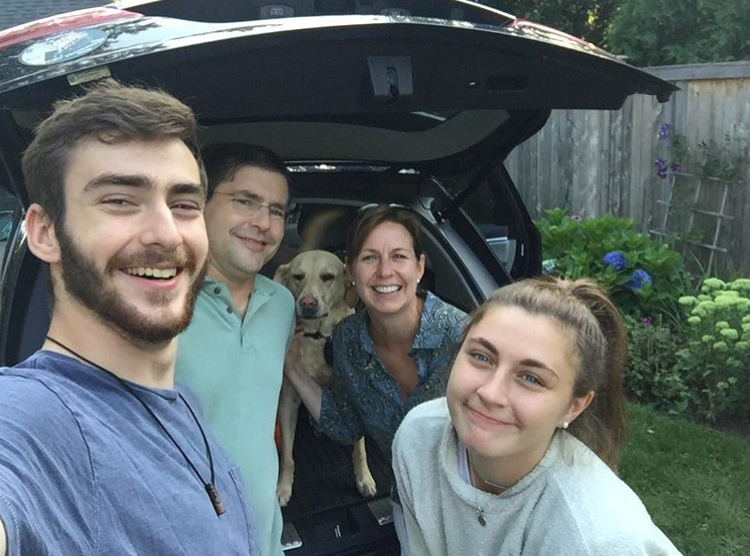Gina Solomon was in her office on March 10, worrying about the growing coronavirus pandemic, when the phone rang with news that quickly and dramatically shifted her concerns.
Solomon, 55, learned she had HER2-positive breast cancer, a subtype of the disease that was as unfamiliar to her as COVID-19. In that instant, she went from wondering how her family would deal with life in semi-quarantine to anxiety over her diagnosis and pending treatment. Initially Solomon was unsure how to find the specialized care she needed while avoiding infection.
Only when she began treatment at Dana-Farber’s Susan F. Smith Center for Women’s Cancers did Solomon’s fears subside. She discovered, rather unexpectedly, that having cancer in a pandemic was less daunting than she initially feared.

Infusion as an oasis
Safety measures at Dana-Farber, such as screening stations throughout the hospital, were not changes to Solomon’s care — they are all she knows. During a time of great uncertainty for herself, and the world, she welcomes the extra steps.
“I appreciate how cautious Dana-Farber staff are being, and how caring,” she says.
Like every other patient, Solomon receives screening calls the morning before each in-person appointment to make sure she doesn’t have any COVID-19 symptoms. She is then screened again upon arriving at Dana-Farber. If there are any changes in symptoms, the patient’s protocol is changed for that day.
Thursday infusions and appointments with oncologist Eric Winer, MD, nurse practitioner Jen McKenna, NP, and other caregivers also give Solomon a break from cabin fever. While she feels lucky and loved to have her husband and two adult kids all home supporting her, Dana-Farber days are a welcome respite from all that togetherness.

“People say, ‘I’m so sorry that you can’t have anybody go with you to chemo,’ but in some ways it’s a really nice oasis,” she says. “It’s a chance to read, watch a movie, and just do something quiet on my own.”
Many Dana-Farber patients and caregivers are adjusting to a mix of in-person and telehealth appointments, largely to reduce risk of COVID-19 exposure. For Solomon, a consultant in the financial services industry who is working remotely through treatment, it’s a perfect arrangement.
“If something concerns me at home I can call my care team any time, and save myself the trip in,” she says. “One time I had a bad reaction to a drug and developed bruising, so I showed it to Jen over Zoom. She explained what it was and provided a treatment plan, all without a significant disruption to my day.”
Even though Solomon jokes that she doesn’t know what some of her caregivers look like behind their masks, she is serious when describing how lucky she feels to have them.
“There is a sense of congeniality and care at Dana-Farber that is just extraordinary,” she says. “I’m optimistic about my outlook, and the path and people taking me there.”
